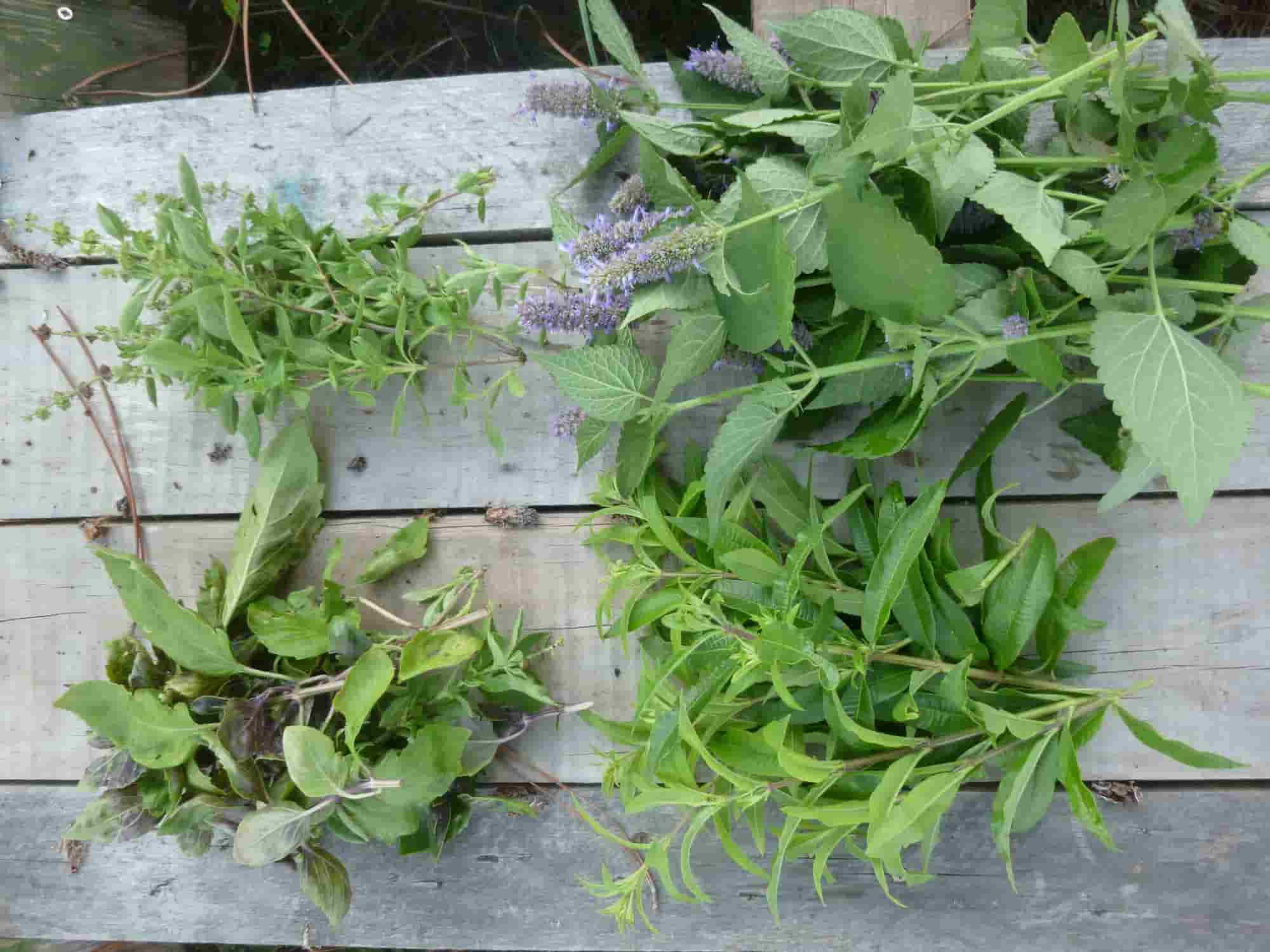
How to create an aromatic herbs mosaic?
All our tips to create a small herb checkerboard garden
Contents
From garden to plate, there is often just a step. This is especially true with herb plants that we love to have on hand to flavour or enhance a dish. Grown in the vegetable garden, on the terrace, or even in pots on the balcony, always within reach of the pans, these herbs add a touch of flavour or spice to our cooking. But beyond their culinary usefulness, these herbs prove to be lovely plants chosen for their aesthetics or the fragrance that is released at the mere touch of the hand. So why not showcase them in a mosaic to integrate into the garden or even on the terrace? We’ll explain which materials to use and which plants to combine to create a successful herb mosaic.
What is an aromatic mosaic?
You have certainly admired those mosaics made up of small fragments of stone assembled to form figures or graphic shapes, more or less complex. Brightly coloured or more subdued, these mosaics always make for stunning decorations on both walls and floors.
With their multiple colours and the variety of their foliage or flowering, aromatic plants can create a different, original, colourful mosaic full of scents. Very graphic and geometric, this mosaic can adorn a space in your garden or be integrated into the paving of a terrace or courtyard. In short, growing your aromatics can become both a playful and aesthetic endeavour. Provided you follow a few simple rules.
Read also
Thyme: growing, planting, pruningPaving: which materials to choose?
To successfully create your mosaic herb garden, it’s best to start by defining the space with different checkerboards. Much like a chessboard, you can alternate between empty squares and those filled with herbs. In this regard, the choice of material is crucial as it will ensure the structure’s durability while also imparting a style.
For your slabs, head to DIY stores that offer a wide range of materials, originally intended for terrace landscaping, thus perfectly resistant to weather, moisture, and biological attacks from fungi or wood-boring insects. Depending on your preferences, you can choose from:
- Natural wood slabs, either raw or stained, with authentic charm suitable for all architectural styles.
- Composite wood slabs, highly durable, requiring no maintenance.
- Reconstituted stone slabs, very resistant to frost, available in multiple colours.
- Natural stone slabs for a uniquely charming finish.
- Gravelled slabs with exceptional strength.
- Bricks or cobblestones, very easy to lay on sand, for example.
Discover other Herbs
View all →Available in 0 sizes
Available in 0 sizes
Available in 1 sizes
Available in 1 sizes
Available in 1 sizes
Available in 1 sizes
Available in 1 sizes
Available in 1 sizes
Available in 1 sizes
Available in 1 sizes
Which aromatic plants?
Once you have created a solid structure for your mosaic, it’s time to think about the aromatic plants you will plant in it. While these aromatics share the common trait of seasoning our dishes, forming the basis of infusions and herbal teas, or even composing cosmetic products, they do not have the same needs for development.
Some require a sunny location, while others can tolerate partial shade. Some thrive in soil rich in organic matter, while others are content with poor soil. Some are frost-sensitive, while others withstand the cold. In short, it is essential to understand the needs of each aromatic plant to best associate them in the patterns of your mosaic.
Those that need sunlight
Because they are most often of Mediterranean origin, these aromatic plants require a very sunny location. Generally speaking, they prefer light, well-drained soils, and heavy, damp soils will be fatal to them. They can withstand the cold and have evergreen foliage. In the sunny patterns of your aromatic mosaic, you can plant:
- Thyme, of which there are many varieties: common thyme, lemon thyme, orange thyme, creeping thyme, Corsican thyme…
- Rosemary, which thrives in dry, poor soils.
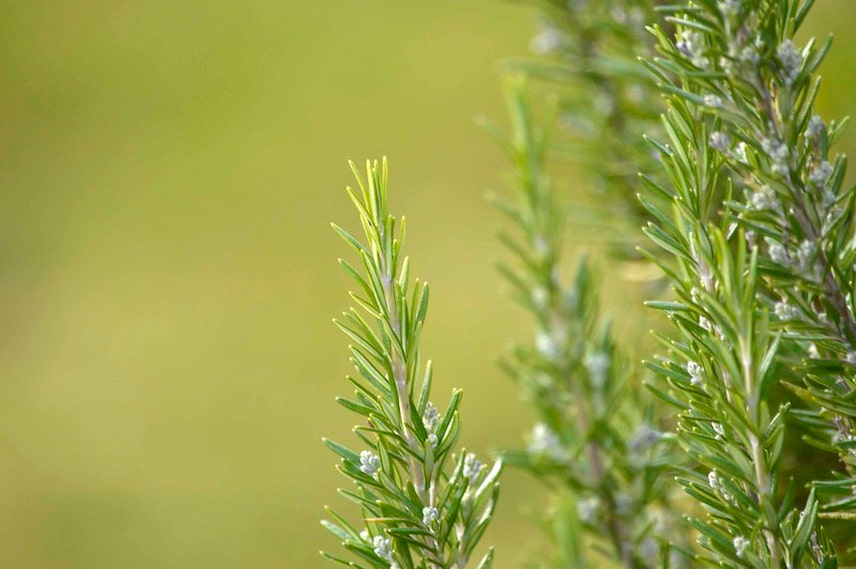 Rosemary has the same needs as thyme, summer savory, or oregano.
Rosemary has the same needs as thyme, summer savory, or oregano.
- Summer savory, which is very frost-resistant.
- Oregano or wild marjoram, an easy-going plant that withstands both drought and cold.
- Common sage, which offers beautiful blue-violet flowers.
- Santolina, whose flowers can be used in infusions or to scent wardrobes.
- Lavender for its extraordinary fragrance.
Those that need sunlight and winter protection
These aromatic plants also require maximum sunlight, along with winter protection such as mulching or a protective cover in regions where winters are less mild. Over the years, as they harden and acclimatise, the protection can be reduced.
In your aromatic mosaic, these plants need light but rich organic matter soil, and especially very well-drained soil. A south-facing exposure is therefore recommended, and being sheltered by a wall is even better.
You can grow together:
- Vervain or lemon verbena, from which the leaves are harvested for infusions.
- Lemongrass to be grown in regions with the mildest climates.
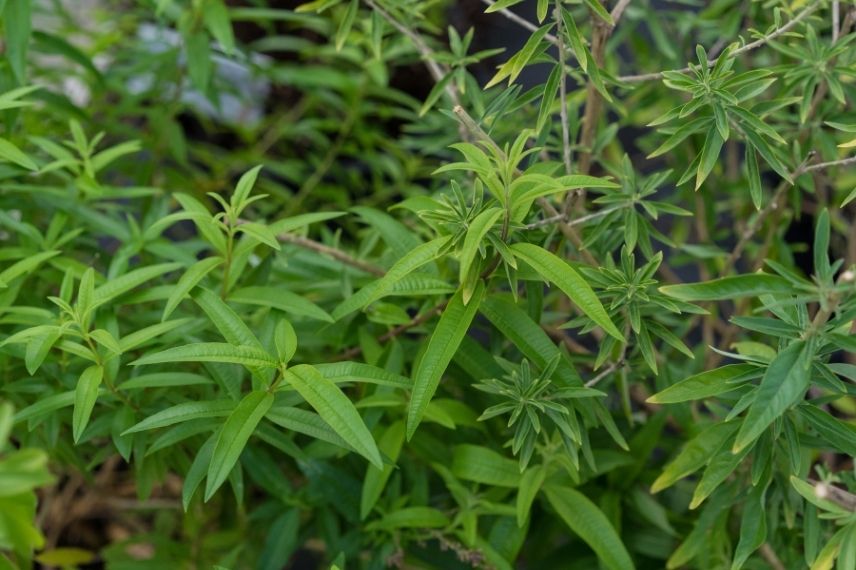 Aloysia citriodora or Lemon verbena.
Aloysia citriodora or Lemon verbena.
Those that need water and rich soil
These perennial aromatic plants have cycles quite different from those of Mediterranean aromatic plants. Their foliage may sometimes disappear in winter, but it is mainly their needs that differentiate them from southern aromatics. Thus, to grow properly, they require rich, slightly heavier soils and especially regular watering. If these conditions are met in your aromatic patterns, you can plant:
- Mint, which offers a variety of scents and flavours: Moroccan mint, chocolate mint, bergamot mint… the choice is vast.
- Chives, which disappear in winter to reappear in spring.
- Lemon balm, with its delightful lemon scent, needs fertile, cool soil.
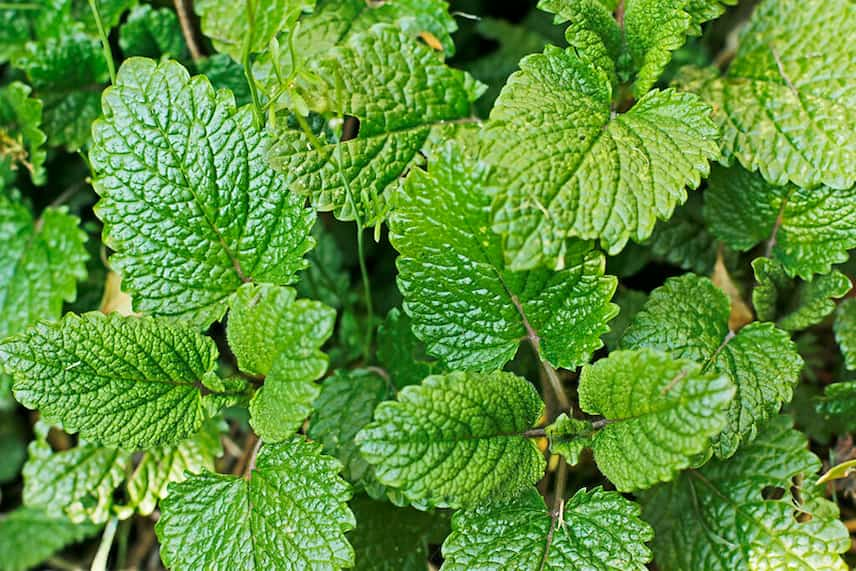 In an aromatic garden, lemon balm can coexist with mint, chives, sorrel, and tarragon.
In an aromatic garden, lemon balm can coexist with mint, chives, sorrel, and tarragon.
- Sorrel, which is low-maintenance, hardy, and grows well in light shade.
- Tarragon, which loves the sun.
Those that are annual
These aromatic plants are only present for one season, but they can be interspersed with the slower-growing perennials. However, most require rich soil and regular watering to prevent them from bolting too quickly.
You can sow or plant:
- Basil to enhance your salads, which needs sun and warmth.
- Coriander, which prefers humus-rich, cool soils.
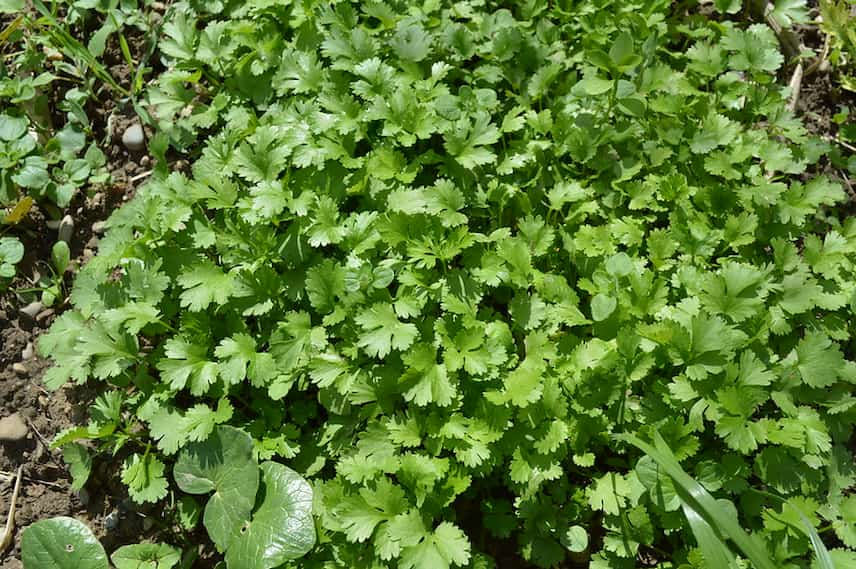 Like basil and dill, coriander is an annual aromatic plant.
Like basil and dill, coriander is an annual aromatic plant.
- Subscribe!
- Contents
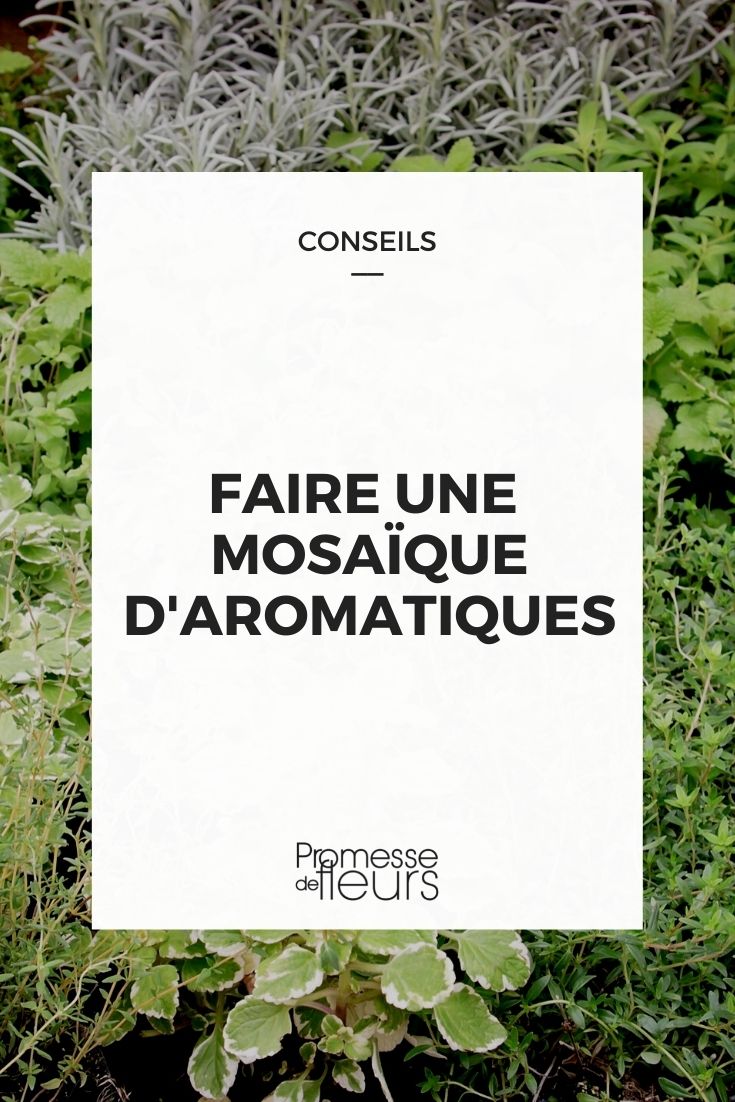































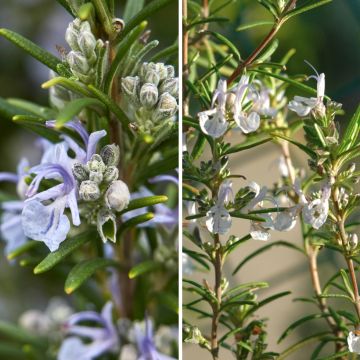
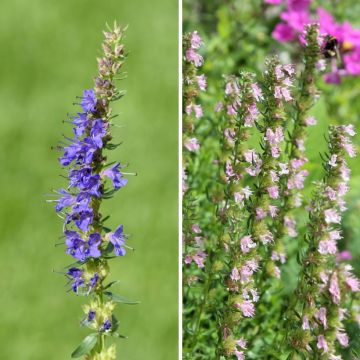
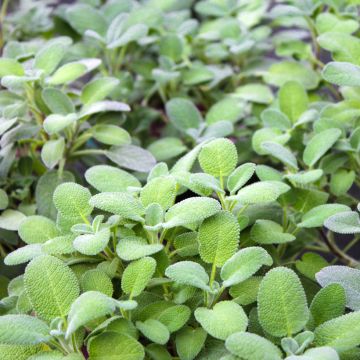
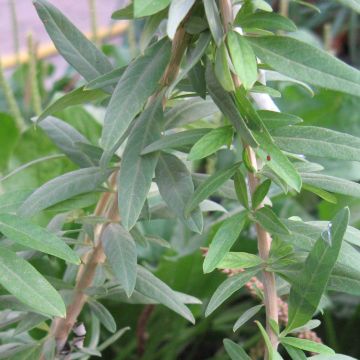
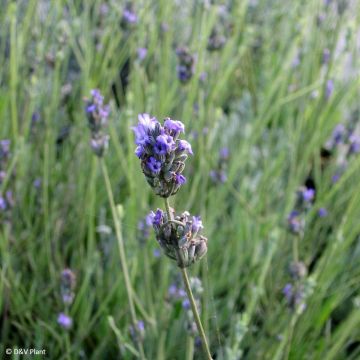
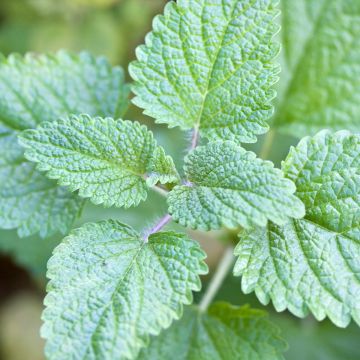

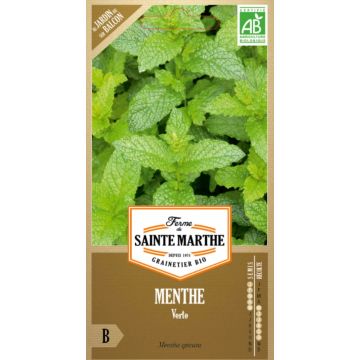
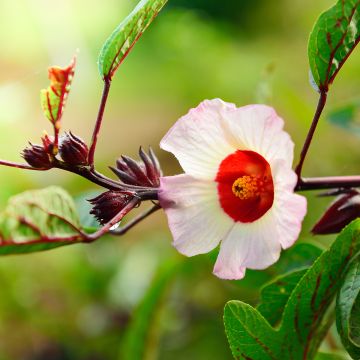
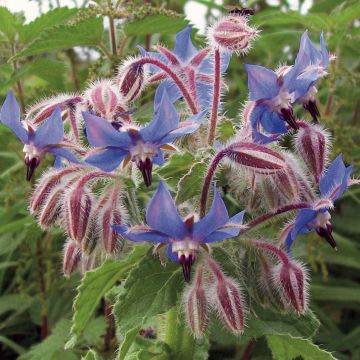
Comments